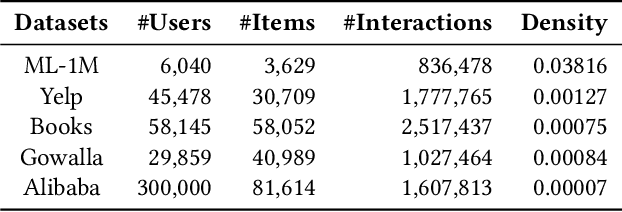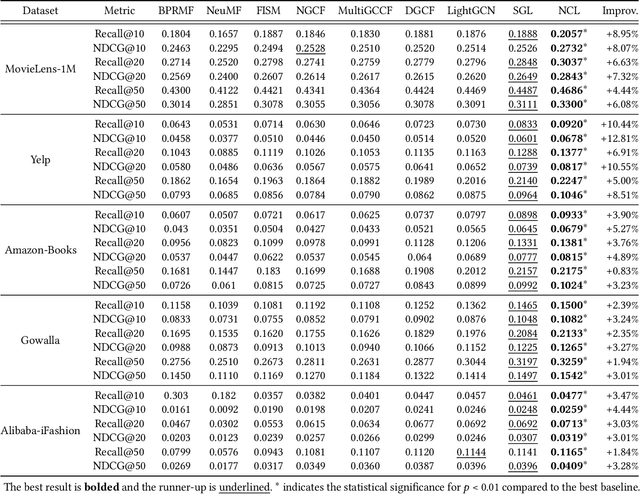Improving Graph Collaborative Filtering with Neighborhood-enriched Contrastive Learning
Paper and Code
Feb 15, 2022



Recently, graph collaborative filtering methods have been proposed as an effective recommendation approach, which can capture users' preference over items by modeling the user-item interaction graphs. In order to reduce the influence of data sparsity, contrastive learning is adopted in graph collaborative filtering for enhancing the performance. However, these methods typically construct the contrastive pairs by random sampling, which neglect the neighboring relations among users (or items) and fail to fully exploit the potential of contrastive learning for recommendation. To tackle the above issue, we propose a novel contrastive learning approach, named Neighborhood-enriched Contrastive Learning, named NCL, which explicitly incorporates the potential neighbors into contrastive pairs. Specifically, we introduce the neighbors of a user (or an item) from graph structure and semantic space respectively. For the structural neighbors on the interaction graph, we develop a novel structure-contrastive objective that regards users (or items) and their structural neighbors as positive contrastive pairs. In implementation, the representations of users (or items) and neighbors correspond to the outputs of different GNN layers. Furthermore, to excavate the potential neighbor relation in semantic space, we assume that users with similar representations are within the semantic neighborhood, and incorporate these semantic neighbors into the prototype-contrastive objective. The proposed NCL can be optimized with EM algorithm and generalized to apply to graph collaborative filtering methods. Extensive experiments on five public datasets demonstrate the effectiveness of the proposed NCL, notably with 26% and 17% performance gain over a competitive graph collaborative filtering base model on the Yelp and Amazon-book datasets respectively. Our code is available at: https://github.com/RUCAIBox/NCL.
 Add to Chrome
Add to Chrome Add to Firefox
Add to Firefox Add to Edge
Add to Edge